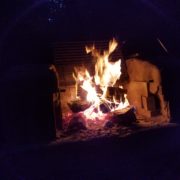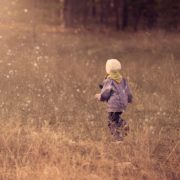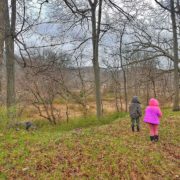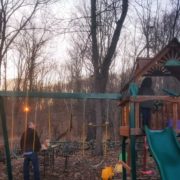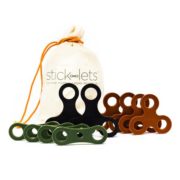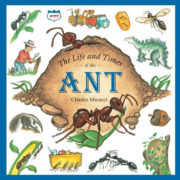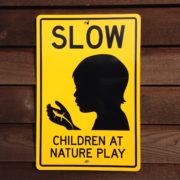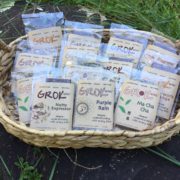
Photograph Courtesy of family+footprints.
Last week we talked all about the different ways semi-structured activities can have a powerful impact on a child. Yes. To complement that, though, of course we want to talk about all the ways in which structure is not necessarily needed in outdoor play. The forest is filled with millions of natural materials to explore, to problem solve, to create with and generally, to let a child enter a world of imaginative play. This can happen when we facilitate experiences, but it is different and truly inspiring, when we, as adults, watch what unfolds as an observer to childhood creativity running wild in the wild.
Here is some of what you might see unfold as children - because they naturally will - start creating in the woods.
Imaginative Play
To catch a glimpse into a child's imagination is pure bliss. Enter a natural space and it's hard to miss the chance to see this type of play unfold. Sticks, moss, fallen trees, rocks, streams, leaves - they all make for props to a larger world in our children's minds. Children already have it within them to be creative. The forest just provides the ultimate space, with new and familiar materials alike all around. What they come up with - both in nature and as a jump off point for further creativity out of the woods - can really blow you away.

Photograph Courtesy of family+footprints.
Curiosity + Natural Learning
Creativity in the woods usually begins with picking up an object, as though there is an observation phase. Children learn by interacting with that object, although as they get older ideas form more quickly and become more complex. You'll spot the beginnings of their creativity as they find what it is that interests them that day. As a bonus, keep an eye out for the ways in which they are learning more about the natural world by engaging in play within it.
Collaboration
Sometimes outdoor play happens alone. This is just as ripe for creativity as when children play together, and brings with it many benefits on its own. But collaboration is a major benefit of playing with others. As children explore together in the woods, they inspire each other with their ideas. They build off of each other and delegate roles, they support and begin to resolve conflicts. They figure out how the creative process works not just on their own, but along with other creative minds.

Photograph Courtesy of family+footprints.
Confidence
When children create in a supportive environment, they are on a road to finding confidence in themselves, both as a person and as a creator. Sometimes creations don't go as expected, but the forest often seems to be forgiving. What didn't work with one method makes way for new ideas with new materials. This idea of trying again, in and of itself, is similar to most other creative spaces, except that with endless materials around, along with the calming effect of the space itself, the forest is a breeding ground for confidence to come out of creative play.
As you plan for outings in the forest, consider the ways in which less is more. Less structure from adults can create more opportunities for creativity with children. There is much to gain from both experiences, but free play, exploration and creativity can feel rare these days. Make these times sacred. The benefits will reveal themselves almost instantly.
Related Posts
Following a Child's Lead in the Woods
Creating Empowering Outdoor Activities



